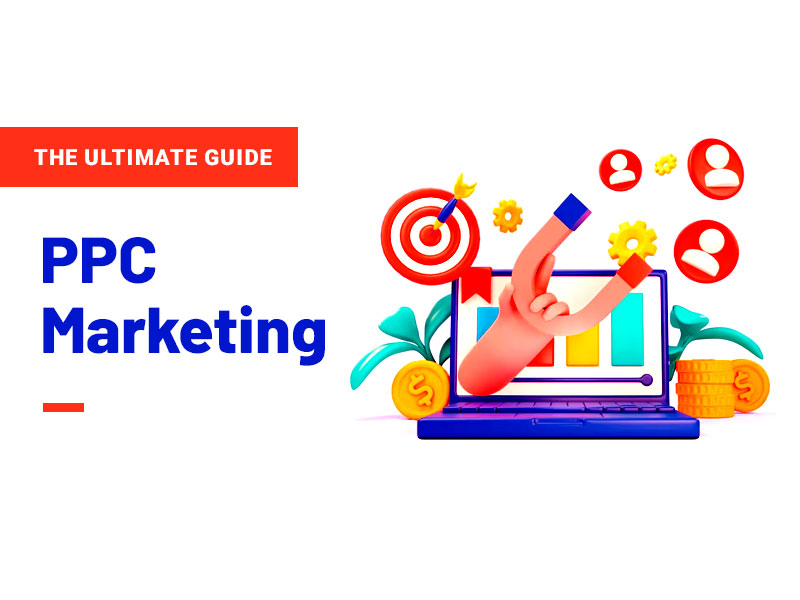Setting up a successful eCommerce business is no small feat, but with the right approach and knowledge, your startup can flourish in the digital marketplace. In this article, we’ll explore the essential strategies, marketing techniques, and platform selection considerations for startups in the world of eCommerce. Written in a conversational and accessible style, we aim to provide a comprehensive and easy-to-follow guide for aspiring entrepreneurs.
I. Laying the Foundation
Developing a Solid Business Plan
Before launching an eCommerce business, it’s crucial to have a well-thought-out business plan. A good business plan should include:
- 1. Your unique selling proposition (USP): Clearly define what sets your product or service apart from the competition.
- 2. Target market analysis: Identify your ideal customers, their needs, and how you plan to address them.
- 3. Competitive analysis: Assess your competition and evaluate their strengths and weaknesses.
- 4. Revenue model: Determine how you’ll generate income, such as through product sales, subscription services, or advertising.
- 5. Marketing strategy: Outline how you’ll promote your products or services, including advertising, social media, and content marketing.
- 6. Operations plan: Detail the necessary tools, technology, and resources you’ll need to run your eCommerce business.
Selecting the Right eCommerce Platform
Choosing an eCommerce platform is a critical decision that can make or break your online business. Consider these factors when evaluating your options:
- 1. Ease of use: The platform should be user-friendly and easy to manage, even for those with limited technical expertise.
- 2. Customisability: Your platform should allow you to tailor the look and feel of your online store to match your brand identity.
- 3. Scalability: As your business grows, your eCommerce platform should be able to accommodate increased traffic, product offerings, and customer support needs.
- 4. Integration capabilities: The platform should seamlessly integrate with your preferred payment gateways, marketing tools, and other business applications.
- 5. Pricing: Evaluate the pricing structure and associated costs of the platform, including subscription fees, transaction fees, and add-on services.
Some popular eCommerce platforms include Shopify, WooCommerce, and BigCommerce, each offering unique features and benefits tailored to different business needs.
II. Building Your Online Presence
Designing an Engaging and User-Friendly Website
Your website is your digital storefront and plays a crucial role in attracting and retaining customers. Here are some design elements to consider:
- 1. Responsive design: Ensure your website is mobile-friendly and displays correctly on various devices and screen sizes.
- 2. Navigation: Make it easy for customers to find products and information with a clear and intuitive navigation menu.
- 3. High-quality visuals: Use professional product photography, images, and graphics to convey your brand identity and entice customers.
- 4. Load speed: Optimise your website’s load speed to provide a seamless browsing experience and improve search engine rankings.
- 5. Checkout process: Simplify the checkout process to reduce cart abandonment and increase conversion rates. Investing in eCommerce optimization services can enhance the user experience, streamline the payment process, and implement effective strategies to encourage users to complete their purchases seamlessly.
Crafting Compelling Product Descriptions
Well-written product descriptions are essential for driving sales and reducing returns. Keep these tips in mind when crafting your copy:
- 1. Focus on benefits: Highlight the benefits and features of your products, explaining how they address customer pain points or desires.
- 2. Use clear and concise language: Write in a straightforward and easily digestible style, avoiding jargon or complex terminology.
- 3. Be persuasive: Use persuasive language and techniques, such as scarcity, social proof, and storytelling, to encourage customers to make a purchase.
- 4. Incorporate SEO best practices: Optimise your product descriptions with relevant keywords to improve search engine visibility and attract organic traffic.
- 5. Include product specifications: Provide all necessary details, such as dimensions, materials, and care instructions, to help customers make informed decisions.
III. Implementing Effective Marketing Strategies
Search Engine Optimisation (SEO)
SEO is vital for attracting organic traffic to your eCommerce website. Implement these best practices to improve your search engine rankings:
- 1. Keyword research: Identify relevant keywords that your target audience is searching for and incorporate them into your website content.
- 2. On-page optimization: Optimise your website’s metadata, headings, URL structure, and internal linking to boost its search engine performance.
- 3. Off-page optimization: Build high-quality backlinks from authoritative websites to enhance your site’s credibility and search rankings.
- 4. Technical SEO: Ensure your website loads quickly, is mobile-friendly, and has a secure SSL certificate to provide a seamless user experience and improve search engine performance.
Social Media Marketing
Social media platforms offer a powerful and cost-effective way to engage with your target audience and drive traffic to your website. Consider these strategies:
- 1. Choose the right platforms: Focus on the social media channels that your target audience frequents, such as Instagram, Facebook, or Pinterest.
- 2. Develop a content strategy: Create a mix of promotional, educational, and engaging content that resonates with your audience.
- 3. Interact with your followers: Respond to comments, messages, and reviews to build relationships with your customers and foster brand loyalty.
- 4. Leverage influencer marketing: Collaborate with influencers in your niche to reach new customers and boost your brand credibility.
Email Marketing
Email marketing remains an effective way to connect with your customers and drive sales. Implement these tactics to enhance your email campaigns:
- 1. Build your email list: Use lead magnets, such as discounts or free resources, to entice website visitors to subscribe to your mailing list.
- 2. Segment your subscribers: Categorise your subscribers based on their preferences, behaviours, or demographics to send targeted and relevant content.
- 3. Craft engaging subject lines: Write compelling subject lines that encourage recipients to open your emails and read your content.
- 4. Personalise your emails: Use personalization tokens, such as the recipient’s name or purchase history, to create a more tailored and engaging experience.
- 5. Monitor your metrics: Track your email marketing performance using key metrics, such as open rates, click-through rates, and conversion rates, to refine your strategy.
IV. Providing Excellent Customer Service
Streamlining Customer Support
Providing exceptional customer service is essential for retaining customers and cultivating positive brand sentiment. Implement these best practices:
- 1. Offer multiple support channels: Provide customer support through various channels, such as live chat, email, and social media, to cater to different preferences.
- 2. Establish clear response times: Set and communicate realistic response times to manage customer expectations and maintain a high level of service.
- 3. Create a comprehensive FAQ section: Develop an in-depth FAQ page on your website to address common customer queries and reduce support requests.
- 4. Train your support team: Ensure your customer support team is well-trained, knowledgeable, and empathetic to provide a consistently high level of service.
Encouraging Customer Reviews and Testimonials
Customer reviews and testimonials can significantly influence purchasing decisions and enhance your brand credibility. Encourage feedback by:
- 1. Requesting reviews: Ask customers for their feedback after a purchase or a positive interaction with your brand, either via email or through a follow-up message.
- 2. Offering incentives: Provide discounts, freebies, or other incentives in exchange for honest reviews to increase response rates.
- 3. Displaying reviews on your website: Showcase positive reviews and testimonials prominently on your website to instill trust in potential customers.
- 4. Responding to negative reviews: Address negative feedback promptly and professionally, demonstrating your commitment to customer satisfaction.
V. Managing and Optimising Your eCommerce Operations
Streamlining Order Fulfilment
Efficient order fulfilment is crucial for maintaining customer satisfaction and reducing operational costs. Consider these strategies to help you fulfil your beauty and health orders (or whatever it is you are selling):
- 1. Centralise inventory management: Use an inventory management system to monitor stock levels, prevent stockouts, and streamline order processing.
- 2. Implement automation: Automate repetitive tasks, such as order confirmations and shipping notifications, to save time and reduce the risk of errors.
- 3. Choose the right shipping partners: Select reliable shipping providers that offer competitive rates, fast delivery times, and reliable tracking services.
Analysing and Optimising Your eCommerce Performance
Regularly reviewing and optimising your eCommerce performance is essential for identifying areas for improvement and driving business growth. Utilise these tactics:
- 1. Monitor key performance indicators (KPIs): Track essential metrics, such as conversion rates, average order value, and customer lifetime value, to measure your business’s success.
- 2. Conduct A/B testing: Test different website elements, such as headlines, product images, and CTAs, to determine which variations yield the best results.
- 3. Leverage web analytics: Use tools like Google Analytics to gain insights into your website traffic, user behaviour, and the effectiveness of your marketing efforts.
By understanding and implementing these strategies, your startup will be better equipped to succeed in the competitive world of eCommerce. From developing a solid business plan to providing excellent customer service, each aspect of your online business plays a crucial role in ensuring long-term success. So, dive in, learn from your experiences, and watch your eCommerce venture thrive.
VI. Expanding Your Business: Going International
As your eCommerce business grows, consider expanding your reach by tapping into international markets. Going global presents both opportunities and challenges, so prepare by implementing these strategies:
Conducting Market Research
Before entering a new market, conduct thorough research to identify the best opportunities and understand local consumer preferences. Consider these steps:
- Evaluate potential markets: Assess market size, growth potential, competition, and regulatory requirements to identify the most promising opportunities.
- Understand cultural nuances: Research local customs, traditions, and consumer preferences to tailor your product offerings and marketing efforts accordingly.
- Identify local partners: Establish relationships with local suppliers, distributors, and marketing partners to facilitate smooth market entry and ongoing operations.







